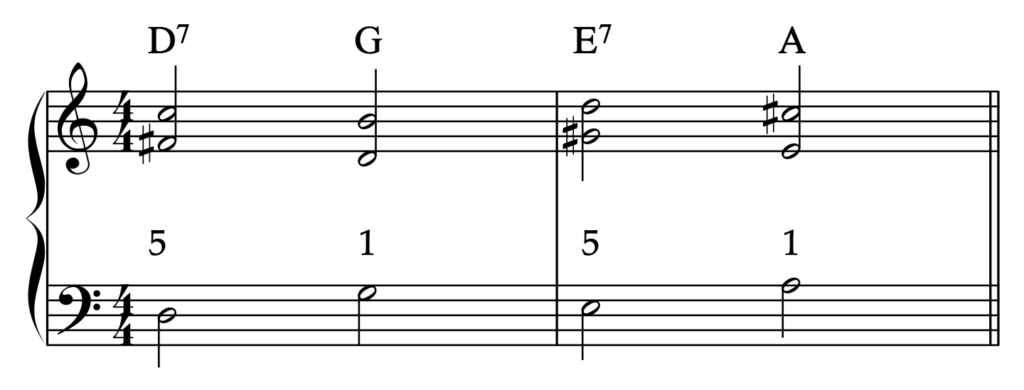Jazz Basics, part 2
More about the most important chord in jazz: the dominant 7.
When discussing jazz basics there is nothing more basic than your understanding of the dominant 7 chord and its functions.
Let’s begin by taking a look at the row of the seven 7th chords constructed over one major scale. Here is an example of seven chords built over the major scale of D. In my video course I refer to these seven chords as the family row. This is because they are all related to the scale. Notice that chord number 5 is A7. This is the dominant 7 chord that ‘wants to resolve to D major, the ‘1’ chord, also known as the tonic.

Here, the A7 ‘wants’ to move to D. Chord 5 ‘wants to move to chord 1.
So once again, in most instances the dominant 7 ‘wants’ to move to its tonic.
Dominant 7 = 5, Tonic = 1.
Examples: D7 ‘wants’ to resolve to G (major or minor). E7 ‘wants’ to resolve to A Major or minor.

I am saying that 5 ‘wants’ to resolve to 1 because sometimes 5 (the dominant 7) will go somewhere completely different.
Chord 5 (dominant 7) = tension. Chord 1 (tonic) = release.
It is essential to understand that when the 5 chord either moves or ‘wants’ to move to its 1 chord, this dominant 7 can be described as a tension chord and the tonic is its release. And because this dominant 7 represents tension, we can build that tension further with notes that are known as extensions and alterations. I’m giving you one illustration of this below (adding the flat 9)
Jazz basics part 2. The two kinds of dominant 7s: moving and static.
1) The moving dominant 7
When the 5 chord ‘wants’ to resolve to its 1, this 5 chord, the dominant 7, is creating a tension because it is wanting to resolve to its tonic (the 1).
Now this is where our ‘jazz basics’ kicks in, because we want to increase this tension by adding notes that are not a part of the chord. These notes are called extensions and alterations. I’ll give you just one example. In this illustration I’ve added a flattened 9 to the dominant 7 chord.

But more about extensions and alterations in the next blog.
Or better still, enrol in my learn jazz piano course! This will take you far beyond jazz basics and on your journey as a jazz piano player.